Annapurna Basecamp -12 Days Overview
Embark on the unforgettable Annapurna Base Camp Trek, a mesmerizing 12-day journey through Nepal’s breathtaking Annapurna region, where towering snow-capped peaks, lush rhododendron forests, and traditional Gurung villages await. This iconic trek offers a perfect blend of adventure and cultural immersion, leading you to the heart of the Himalayas with awe-inspiring views of Annapurna I (8,091m), Machhapuchhre (Fishtail), and Dhaulagiri. Whether you're a seasoned trekker or a first-time hiker, the ABC Trek promises an exhilarating mix of challenging trails, warm teahouse hospitality, and panoramic mountain vistas—making it one of the best treks in Nepal. Ready to conquer the Himalayas? Lace up your boots and let’s explore this bucket-list adventure!
The Annapurna Base Camp Trek winds through diverse landscapes—from terraced farmlands and dense bamboo forests to rugged alpine terrain—offering ever-changing views of Nepal’s majestic peaks. As you ascend, the trail unveils breathtaking panoramas of Annapurna South, Hiunchuli, and Machhapuchhre, their snow-clad summits glistening under the Himalayan sun. The rhythmic crunch of boots on well-trodden paths, the crisp mountain air, and the occasional chime of prayer flags create an unforgettable sensory experience. Reaching ABC (4,130m) feels like stepping into an amphitheater of giants, surrounded by towering peaks that inspire awe and accomplishment. Whether sipping tea in a cozy lodge or standing beneath the star-lit Himalayan sky, every moment on this trek is pure magic—a perfect blend of adventure, serenity, and natural beauty.
As you trek from Chhomrong to Dovan and onward to Machhapuchhre Base Camp, the Annapurna region unveils a stunning variety of flora and fauna. The lower trails wind through lush rhododendron forests, bursting with crimson and pink blooms in spring, while oak, bamboo, and fern groves create a verdant canopy. Higher up, the landscape transforms into alpine meadows dotted with hardy shrubs and wildflowers. Keep an eye out for Himalayan wildlife like the playful langur monkeys, colorful Impeyan pheasants (Danphe), and, if lucky, the elusive Himalayan thar. The pristine air carries the scent of pine and the distant murmur of glacial streams, making every step a sensory delight. This rich biodiversity, combined with dramatic mountain backdrops, ensures that the journey to Annapurna Base Camp is as enchanting as the destination itself.
The Annapurna Base Camp Trek isn’t just about mountains—it’s a deep dive into the rich Gurung and Magar cultures of Nepal. As you pass through villages like Chhomrong and Sinuwa, you’ll see traditional stone houses with slate roofs, terraced farms, and locals working in vibrant Gurung attire. Stop at a teahouse, sip on masala chiya (spiced tea), and enjoy the rhythmic tictac of wooden looms as women weave handmade woolen garments. The warm smiles and "Namaste" greetings make every interaction memorable.
Spiritual Echoes in the Himalayas – Monasteries and Mountain Traditions
Along the trail, you’ll encounter Buddhist stupas, prayer wheels, and fluttering prayer flags, filling the air with serenity. The tictac of prayer beads and the hum of mantras from passing monks add to the tranquil vibe. Villagers often offer "Khada" (ceremonial scarves) as blessings, blending spirituality with daily life. In places like Dovan and Himalaya Hotel, you might even witness a puja (worship ritual) before meals, reflecting the deep-rooted faith of mountain communities.
Teahouse Tales – The Heartbeat of the ABC Trek
The cozy teahouses along the route are where culture truly comes alive. Gather around a wood-fired stove, share stories with fellow trekkers, and savor dal bhat (lentil rice)—the staple meal that fuels Himalayan adventures. Listen to the tictac of dice games as locals play "Ludo" or "Carrom" in the evenings. Many teahouse owners are former climbers, sharing fascinating tales of the mountains over steaming cups of Tibetan butter tea.
Festivals and Footsteps – Celebrating Life in the Annapurna Region
If trekking during festivals like Dashain or Tihar, you’ll witness villages lit up with oil lamps, dances, and feasts. The tictac of drums and cymbals during cultural performances echoes through the valleys. Locals might invite you to join a "Deusi-Bhailo" folk song or offer "Sel Roti" (rice doughnuts)—a taste of Nepali tradition. These moments turn a trek into a living cultural journey, where every step connects you deeper with the soul of the Himalayas.
Route Overview Of Annapurna Basecamp:
Your 12-day Annapurna Base Camp Trek begins in Pokhara, Nepal’s lakeside paradise, before driving to Nayapul (1-2 hours) and trekking through charming villages like Tikhedhunga and Ulleri. The trail then ascends through lush forests to Ghorepani, famous for its Poon Hill sunrise views over the Annapurna and Dhaulagiri ranges. From here, you descend through rhododendron woods to Chhomrong, a picturesque Gurung village perched on a hillside, offering your first close-up views of Machhapuchhre (Fishtail Mountain).
Beyond Chhomrong, the route drops into the Modi Khola Valley, passing through Bamboo and Dovan, where dense forests and cascading waterfalls create a mystical atmosphere. As you climb higher to Himalaya Hotel and Deurali, the landscape shifts to alpine terrain, with icy streams and towering cliffs. The final push takes you to Machhapuchhre Base Camp (MBC, 3,700m), a dramatic setting surrounded by glaciers, before the breathtaking arrival at Annapurna Base Camp (ABC, 4,130m)—a high-altitude amphitheater of snow-capped giants.
The return journey descends through MBC and Dovan, then diverts to Jhinu Danda, where natural hot springs offer a soothing reward for tired muscles. From here, you trek back to Nayapul via Siwai, then return to Pokhara, completing an unforgettable Himalayan circuit. This route balances challenging ascents, cultural encounters, and some of Nepal’s most iconic mountain scenery—making it a must-do for any trekking enthusiast.
Top Highlights of Annapurna Base Camp Trek – 12 Days
- Gurung Culture & Warm Hospitality – Immerse yourself in the traditions of Gurung and Magar villages, enjoy homestay experiences, and savor authentic Nepali dal bhat in cozy teahouses.
- Rhododendron Forests & Wildlife – Trek through lush bamboo groves and vibrant rhododendron forests (blooming in spring), spotting langur monkeys, Himalayan thar, and colorful pheasants along the way.
- Machhapuchhre Base Camp (MBC) – Stand in awe beneath the sacred Fishtail Mountain (Machhapuchhre, 6,993m), surrounded by glaciers and towering cliffs.
- Annapurna Base Camp (4,130m) – Reach the heart of the Himalayas, where you’ll be encircled by giants like Annapurna I (8,091m), Annapurna South (7,219m), and Hiunchuli (6,441m).
- Jhinu Danda Hot Springs – Relax your muscles in natural hot springs after days of trekking—a perfect reward before heading back.
- Teahouse Trekking Experience – Enjoy the camaraderie of fellow trekkers in rustic mountain lodges, sharing stories over masala tea and Tibetan bread.
- Expert Guidance from Vyas Treks – Benefit from experienced Sherpa guides, seamless logistics, and safety-first trekking with a locally trusted operator.
- Diverse Landscapes – From terraced farmlands to alpine meadows and glacial valleys, every day offers breathtaking new scenery.
- Spiritual Himalayan Vibes – Walk past prayer flags, stupas, and monasteries, feeling the serene energy of the mountains.
Accommodation and Food on the Annapurna Base Camp Trek
The Annapurna Base Camp (ABC) Trek offers comfortable teahouse accommodations throughout the journey — from lower villages like Ghandruk and Chhomrong to higher stops like Deurali and Annapurna Base Camp itself. These teahouses are family-run lodges that offer basic twin-sharing rooms with wooden beds, foam mattresses, warm blankets, and pillows. In higher altitudes, especially around Deurali and ABC, rooms are more compact and colder — so bringing a sleeping bag is recommended.
Toilets are mostly shared squat-style, but some lower lodges offer western options. Hot showers are usually available at an additional cost, especially at lower elevations. Wi-Fi is available in some places but is often slow or unreliable as you ascend. Electricity for charging is usually available, either through mains or solar, but may cost extra. Mobile networks (NTC & Ncell) tend to weaken after Sinuwa or Deurali.
When it comes to meals, Dal Bhat is the go-to trekker’s fuel — a filling, balanced Nepali dish. You’ll also find pasta, fried rice, momos (dumplings), chowmein, pancakes, eggs, and porridge on the menu. For drinks and snacks, you can enjoy tea, coffee, hot lemon, biscuits, chocolate, and boiled or bottled water.
Annapurna Base Camp Trek Permits and Checkpoints
Trekking to Annapurna Base Camp takes you deep into the Annapurna Conservation Area, Nepal’s first and largest protected region. To ensure a smooth and legal trek, you will need two main documents: the Annapurna Conservation Area Permit (ACAP) and, optionally, the TIMS Card (Trekkers’ Information Management System).
🛂 Annapurna Conservation Area Permit (ACAP)
Why is it required?
The ACAP is essential to support the conservation of the fragile ecosystem, protect biodiversity, and assist in the sustainable development of local communities living within the Annapurna region.
To apply, you need:
- A photocopy of your passport
- 2 passport-sized photos
- Permit fee (payable by cash or card)
Where can you get it?
- Nepal Tourism Board, Kathmandu (Bhrikutimandap)
- Nepal Tourism Board, Pokhara (Damside/Lakeside area)
- Through a registered trekking agency
- 🪪 TIMS Card (Trekkers’ Information Management System)
Why is it useful?
The TIMS Card helps record your trekking details, adds a layer of safety, and supports search and rescue operations in emergencies.
Types of TIMS Card:
- Green Card – For independent trekkers: NPR 2,000
- Blue Card – For trekkers through an agency: NPR 1,000
What you need:
- A passport copy
- 2 passport-sized photos
- A basic trek itinerary and emergency contact details
⚠️ Note: As of recent updates, the TIMS Card is sometimes optional or not strictly enforced for Annapurna Base Camp if traveling through an agency. Always double-check before your trek.
📍 Checkpoints on the Annapurna Base Camp Route
Your ACAP permit will be checked at several official checkpoints throughout the trek. Common checkpoints include:
- Birethanti (just after Nayapul)
- Chhomrong
- Sinuwa
- Bamboo or Himalaya area
Make sure to carry printed copies of your permits at all times, as mobile screenshots are not accepted at most checkpoints.
Annapurna Base Camp Trek Difficulty & Fitness Level Required
The Annapurna Base Camp Trek is a moderately difficult trek in the Himalayas, offering a rewarding mix of natural beauty, cultural encounters, and adventure. While not technically challenging, the trek involves daily ascents, descents, and trekking at high altitudes, making a reasonable level of fitness important.
🧭 Difficulty Level: Moderate
The Annapurna Base Camp Trek is graded as moderate in difficulty. You’ll be walking for 5 to 7 hours per day, often gaining 400 to 700 meters in elevation. As you climb above 3,000 meters, thin air and altitude-related issues may begin to affect some trekkers.
Key difficulty factors:
- Steep stone staircases (especially around Ulleri and Chhomrong)
- Continuous ups and downs on forested trails
- High-altitude walking beyond Deurali, Machapuchare Base Camp (MBC), and finally Annapurna Base Camp (4,130 meters)
(🧠 Tip: Altitude sickness can affect anyone regardless of experience. It’s important to acclimatize properly, stay hydrated, and take it slow.)
🏃♂️ Fitness Level Required
The Annapurna Base Camp Trek is beginner-friendly but demands basic physical preparation. You don’t need to be an athlete, but having good cardiovascular health, leg strength, and endurance will make the trek much more enjoyable.
Suggested fitness prep before your trek:
- Hiking or brisk walking for 1–2 hours a day, 4–5 times a week
- Cycling, jogging, or stair climbing to build endurance
- Strength training for legs, core, and back
- Practice carrying a daypack with weight (5–8 kg)
- Mental preparation is just as important. Be positive, patient, and ready to embrace the challenge of the mountains.
(💡 Fun fact: Many first-time trekkers successfully complete the ABC trek with basic preparation, so don’t be discouraged—just train wisely!)
🧭 Alternative Tours & Packages
- Annapurna Luxury Trek – Premium Accommodations with Mountain Views
A refined trekking experience through the Annapurna region, featuring comfortable lodges and stunning mountain backdrops. Enjoy guided walks through picturesque villages while relaxing in premium accommodations along the way.
- Annapurna Base Camp Trek – Classic Himalayan Adventure
A popular trek that takes you into the heart of the Annapurna Sanctuary, surrounded by towering peaks and dramatic glaciers. This multi-day journey is a favorite among trekkers for its scenic trails and mountain encounters.
- Annapurna Circuit Trek – World’s Best Trekking Experience
A legendary trekking route that circles the Annapurna range, crossing high mountain passes and offering an incredible mix of landscapes, cultures, and natural beauty. Ideal for those seeking an immersive and rewarding Himalayan adventure.
- Annapurna Base Camp Helicopter Tour
A thrilling and time-efficient way to witness the beauty of the Annapurna region from above. This helicopter tour offers breathtaking aerial views of the Himalayas and a short landing at Base Camp for a truly memorable experience.


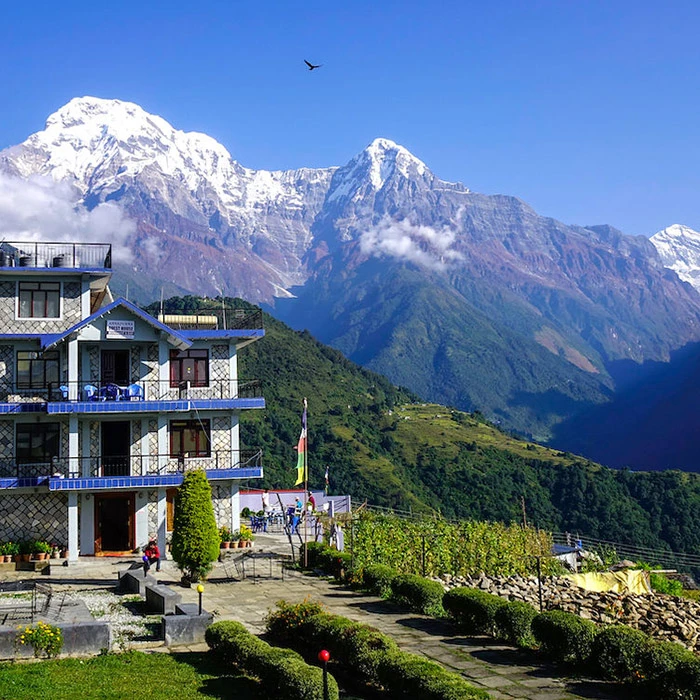




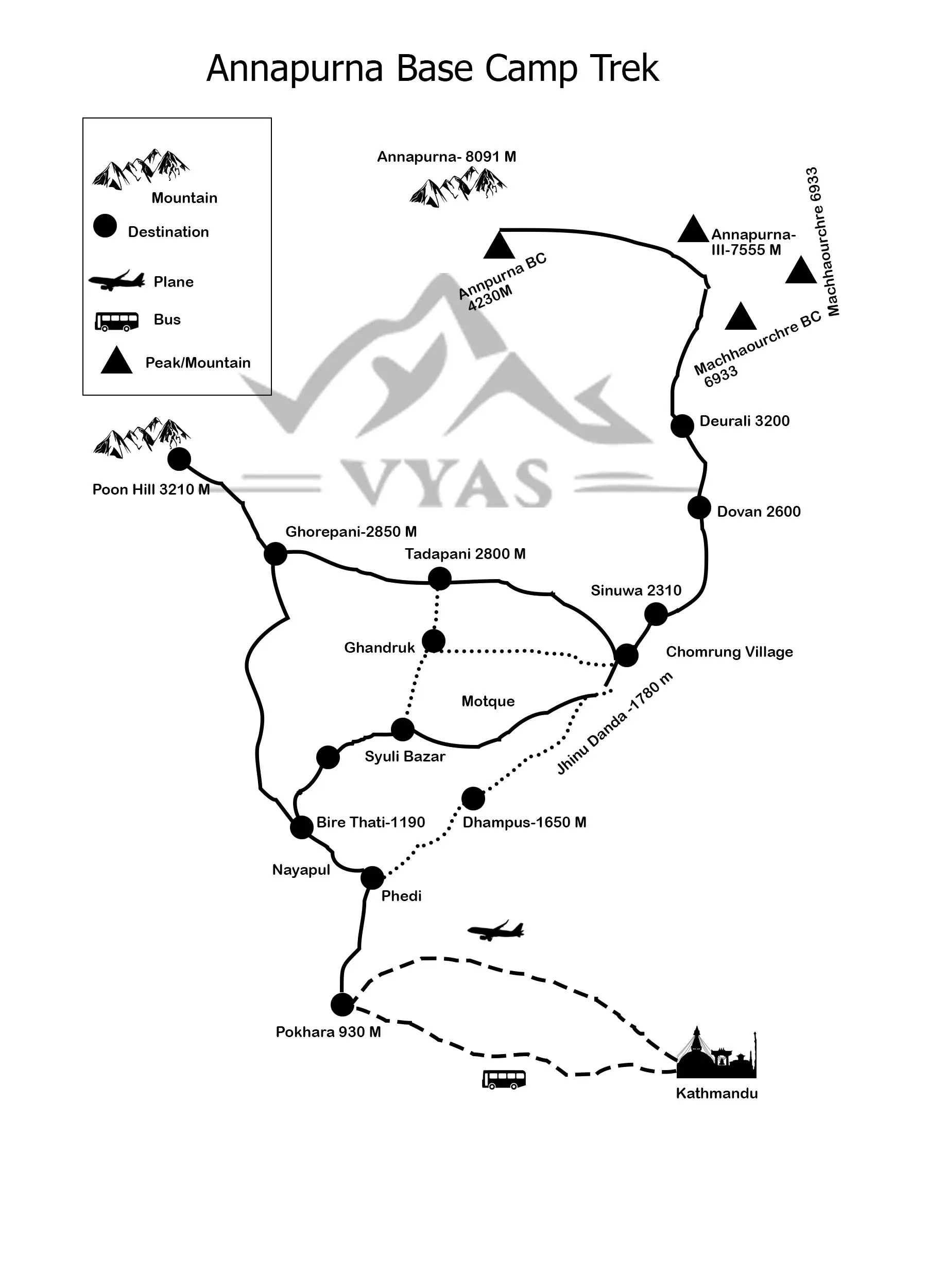


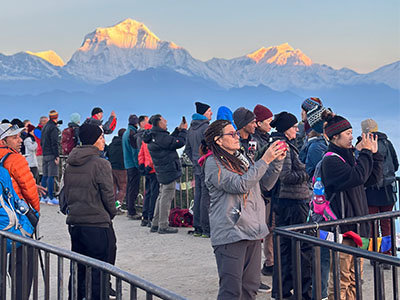
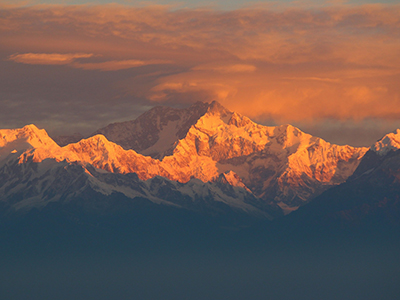
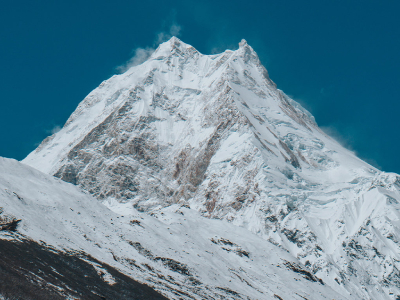
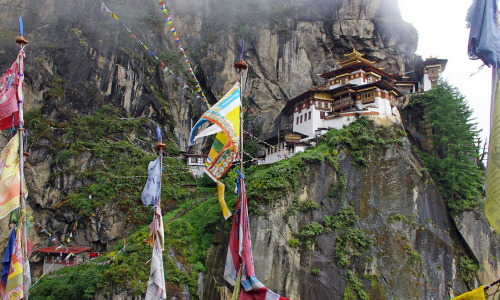
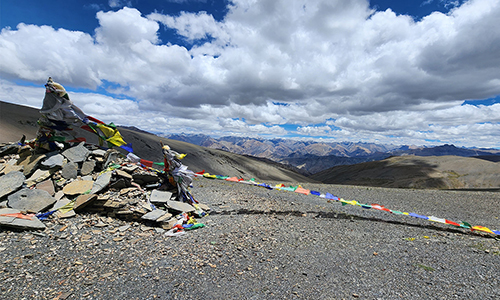
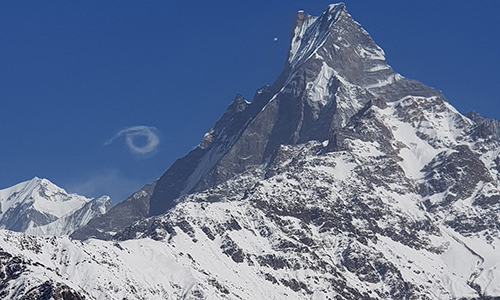
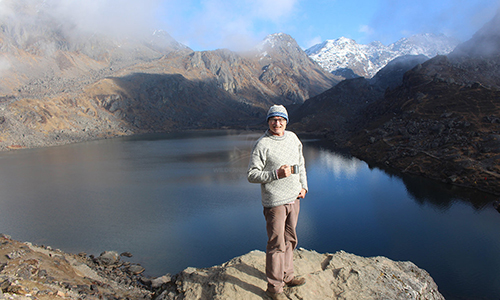



Sarah McAllister
2025-06-16 13:10:18
The Annapurna Base Camp Trek with Vyas Treks Nepal was absolutely unforgettable! From lush forests to snow-covered peaks, every step was breathtaking. The sunrise view from the base camp surrounded by towering mountains was magical. Our guide was knowledgeable, friendly, and made the journey feel safe and special. Everything was perfectly organized. Highly recommend this trek to anyone looking for a true Himalayan experience!